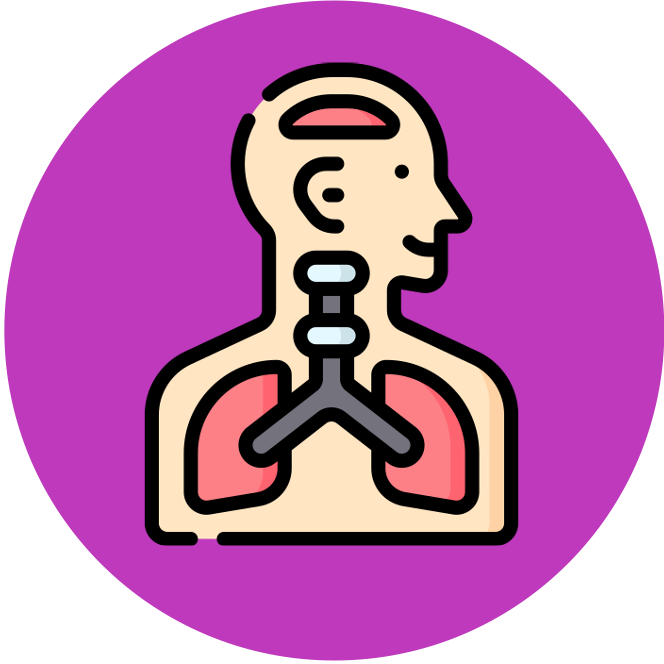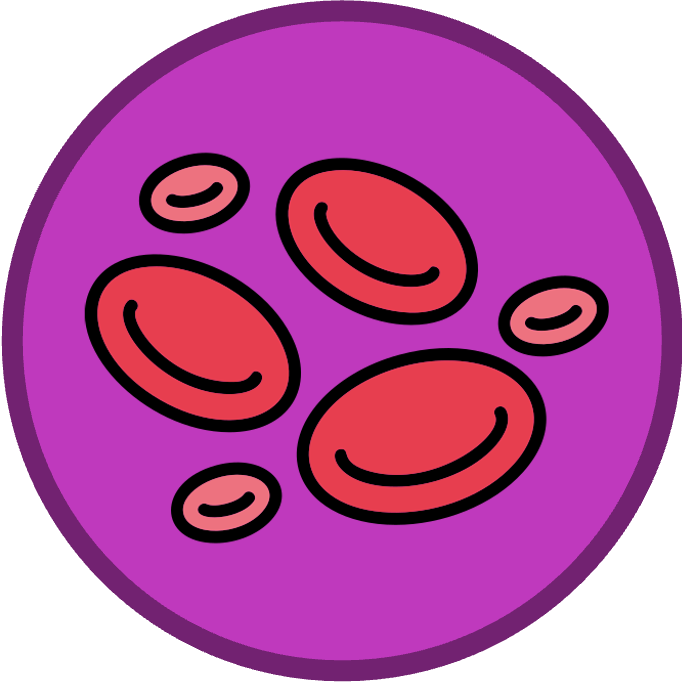

Fluid Exchange
The blood system acts as a transport network for moving essential materials between cells
-
Respiratory gases (oxygen and carbon dioxide) are transported between the lungs and respiring tissues
-
Nutrients are transported from the digestive system and cellular wastes are delivered to the kidneys for excretion
-
The blood system is also used to convey chemical signals (hormones) and transfer immune cells to sites of infection
Blood consists of two key components:
-
Plasma is the fluid portion of the blood and acts as a transport medium for water-soluble materials
-
Hydrophobic materials are typically conjugated to hydrophilic substances (e.g. lipids are transported as lipoproteins)
-
-
Blood cells move around the body within the bloodstream and carry out specific functions:
-
Red blood cells (erythrocytes) contain haemoglobin for the transport oxygen (enabling aerobic respiration)
-
White blood cells (leukocytes) are involved in the elimination of pathogens (fights infections)
-
Platelets (thrombocytes) are required for blood clotting (restricting blood loss from damaged vessels)
-
Tissue Fluid
Plasma is responsible for the formation of tissue fluid which bathes all cells and mediates material exchange
-
The arteriole end of a capillary has a higher hydrostatic pressure which functions to force fluid out of the capillary (filtration)
-
The venous end of a capillary has a comparably lower hydrostatic pressure which allows fluid to drain back into the capillary (reabsorption)
Tissue Fluid Formation


Material Exchange
The selective exchange of substances results in differences between the composition of tissue fluid and blood plasma
-
Water and solutes are a core component of both tissue fluid and blood plasma
-
Solutes needed by cells (such as glucose, amino acids and oxygen) will be found in lower amounts in tissue fluid compared to blood plasma
-
Blood cells are typically too large to leave the capillaries and so are not found in tissue fluids (although leukocytes may extravaste to fight infections)
-
Plasma proteins are also too large to filter into the tissue fluid (these proteins create a solute gradient that will draw fluid back into capillaries at the venous end)
-
Blood plasma will typically contain higher concentrations of oxygen and lower concentrations of carbon dioxide than tissue fluid (ensures gas exchange)
-
Blood Plasma
Tissue Fluid
Cells
All blood cells
Phagocytes
Proteins
Large plasma proteins
Smaller proteins
-
Glucose
Higher glucose levels
Lower glucose levels
Amino Acids
Higher levels of amino acids
Lower levels of amino acids
Oxygen
Higher oxygen levels
Lower oxygen levels
Carbon Dioxide
Lower levels of carbon dioxide
Higher levels of carbon dioxide
Lymphatic System
Not all the tissue fluid is reabsorbed into capillaries at the venous end and instead drains into the lymphatic system
-
The uptake of fluid by the lymphatic system prevents a progressive build up of fluid in the tissues (oedema)
-
The fluid is circulated through this system as lymph, before re-entering the bloodstream via veins that are located close to the heart
Lymph fluid is under low pressure and is circulated by compression caused by body movement
-
Lymph ducts have valves to prevent back flow (ensures unidirectional movement around the body)
-
Lymph ducts also have thin walls with gaps to allow for the movement of molecules that are too large for capillaries (e.g. certain proteins)
In addition to returning excess fluid to blood circulation, the lymphatic system also fulfils other key functions:
-
Lymph ducts contain multiple filtration sites called lymph nodes, where pathogens are presented to the adaptive immune cells
-
Additionally, lipids absorbed from the digestive system may be transported within the lymphatic system (bypassing metabolism in the liver)




